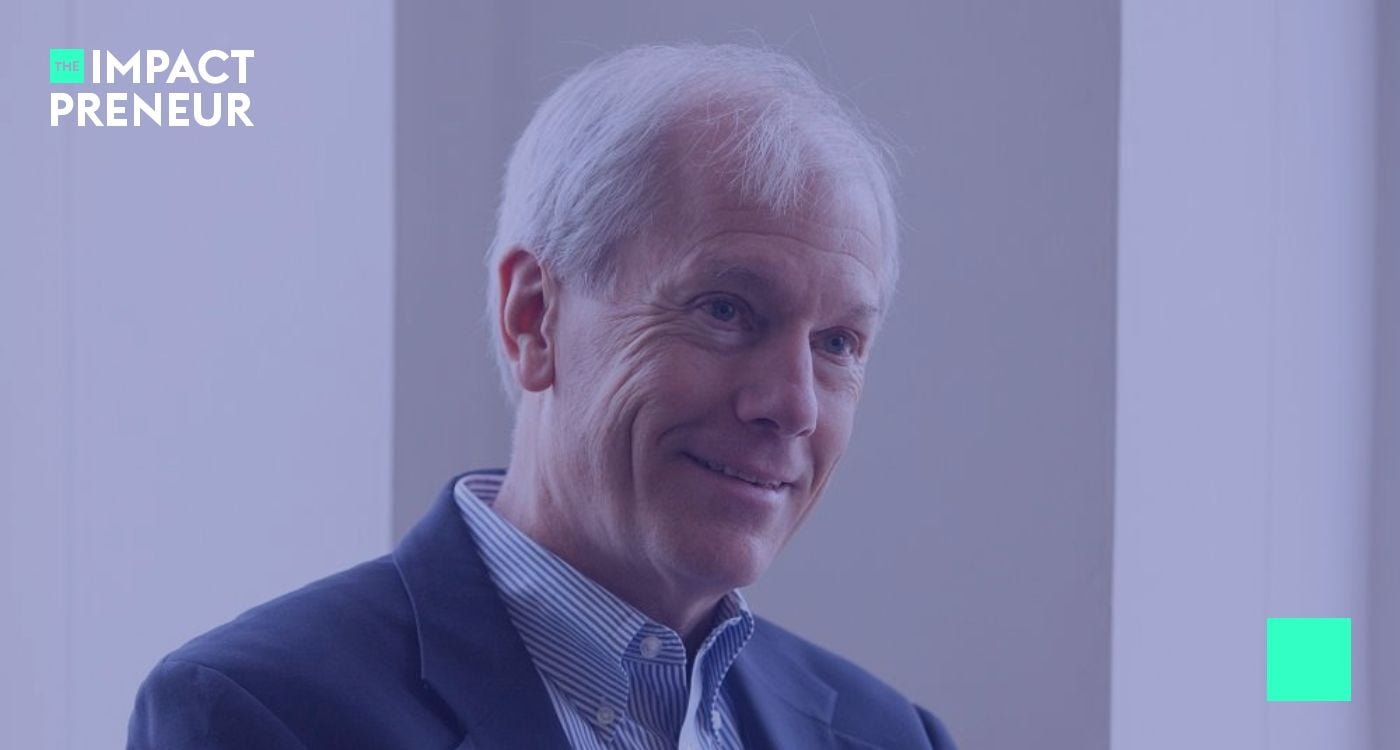Photo: Marci Zaroff | Source: Marci Zaroff - Website
Imagine a world where every garment tells a story of sustainability, where fashion and environmental stewardship intertwine in a vibrant tapestry of change. This isn't a distant dream but the reality that pioneers like Marci Zaroff have been weaving into the fabric of the fashion industry. Through innovation, passion, and an unwavering commitment to the planet, the eco fashion movement is reshaping our wardrobes and, by extension, our world.
Quick Bites:
- Eco fashion isn't just a trend; it's a revolution.
- Sustainability and style go hand in hand, creating a new paradigm of chic.
- Consumers hold the power to drive change, demanding transparency and ethics.
- The future of fashion is green, inclusive, and bursting with innovation.
The Genesis of Green Glamour
When Marci Zaroff, a trailblazer in the sustainable fashion industry and the founder of Eco Fashion Corp, coined the term "eco fashion" in 1995, the concept was as foreign as the idea of the internet to many. Yet, with conviction and a vision for a sustainable future, she set forth on a journey that would forever alter the landscape of the fashion industry. Zaroff's path wasn't just about creating clothing; it was about igniting a movement, challenging the status quo, and proving that sustainability and style could dance together in harmony.
"I coined and trademarked the term eco fashion when people thought I was absolutely insane. No one would ever buy into that concept," Zaroff shared, reflecting on the early skepticism she faced.
But her determination was unwavering, laying the groundwork for a new era in fashion. Her ventures, including the pioneering sustainable textiles brand Under the Canopy, were not mere business initiatives; they were missions to demonstrate that ethical practices, sustainable materials, and fair labor conditions could form the foundation of successful, stylish brands.
This journey was a collective endeavor. Zaroff's vision attracted like-minded individuals, innovators, and change-makers, forming a community united by a common goal: to revolutionize the fashion industry from the inside out. The Eco Renaissance, as Zaroff aptly describes it, marks a period where art, fashion, and sustainability converge to redefine culture and consumption. It's an era of empowerment, where consumers play an active role in a sustainable lifestyle.
"The idea of eco fashion was to style the world of change and change the world of style, bridging the tree hugger and the fashionista," Zaroff explained, capturing the essence of her mission.
As the green glamour movement gained momentum, the industry began to witness a seismic shift. High-profile collaborations, mainstream media attention, and increasing consumer awareness catapulted eco fashion from niche to necessary. The narrative was no longer about 'eco' being an alternative but about it being the new norm. This transformation is a testament to the power of vision, the importance of perseverance, and the impact of collective action.
The Renaissance of Retail: A New Dawn
The fashion industry, historically characterized by lavishness and extravagance, has been undergoing a profound transformation. At the heart of this change is the rising consumer consciousness about the environmental and social impacts of their sartorial choices. This awakening has sparked a renaissance in retail, where sustainability is no longer a buzzword but a baseline expectation.
This revolution extends beyond individual choices or brand policies; it's about creating a new ecosystem that supports and sustains eco-friendly practices at every level. From innovative startups to established giants, the sector is crafting a new narrative where sustainability is an integral part of its identity.
It's not just about changing fabrics or production methods; it's about reimagining the entire lifecycle of a garment. From the sourcing of materials to the longevity and recyclability of the final product, every aspect is being scrutinized through the lens of sustainability. Brands are now racing to align with these new values, recognizing that the future belongs to those who prioritize the planet alongside profit.
Digital platforms and social media have played a crucial role in this transformation, democratizing information and enabling consumers to assess the true cost of their fashion choices. Transparency has become the new currency in retail, with brands that embrace it finding a loyal and engaged audience ready to support them. This shift towards openness and accountability is reshaping consumer expectations and, consequently, brand strategies.
"Business today is not what it used to be. Businesses are being held accountable to social and environmental principles and strategies," Zaroff observes, noting the shift towards accountability and ethical practices.
Marci Zaroff's journey and the collective movement towards green glamour signify a powerful change in how we view our clothes, our planet, and ourselves. This shift towards openness and accountability is reshaping consumer expectations and, consequently, brand strategies, paving the way for a sustainable future in fashion.
The Fabric of the Future: Weaving a Sustainable Legacy
As we stand on the threshold of this new era, it's clear that eco fashion is not just a passing trend but the blueprint for the future of the industry. This future is characterized by innovation, where sustainable materials and ethical practices are not just added features but foundational elements of every garment. It's a future where fashion not only looks good but does good, empowering consumers to make choices that benefit the planet.
"The fashion industry contributes anywhere from 4 to 10% of the world's carbon footprint... It's not about staying ahead anymore; it's about not being left behind," Zaroff points out, stressing the urgent need for the fashion industry to adopt more sustainable practices.
The challenges that lie ahead are significant, but so are the opportunities. Emerging technologies and sustainable innovations are setting the stage for a future where fashion contributes positively to our environment rather than its depletion. Biodegradable fabrics, zero-waste production processes, and circular fashion models are no longer just ideas—they are becoming realities that are reshaping the industry. These advancements are not only beneficial for the environment but also economically viable, proving that sustainability and profitability can coexist.
"We're not just what we eat; we're also what we wear. And that's because the skin is our largest organ," Zaroff elaborates, highlighting the interconnectedness of our clothing choices and our health.
The role of education in this eco fashion revolution cannot be overstated. As consumers become more informed about the impacts of their purchasing decisions, they are demanding more from brands. This demand for transparency and sustainability is driving brands to innovate, not just in their products but in their storytelling. The stories behind the garments—the people who make them, the materials used, and the journey from concept to closet—are becoming as important as the products themselves.
This new paradigm also opens up a dialogue about the true value of clothing. The era of disposable fashion is giving way to a culture of appreciation for craftsmanship, quality, and longevity. Consumers are beginning to see their wardrobes as collections of meaningful pieces rather than disposable commodities, leading to a more thoughtful and intentional approach to fashion.
Looking forward, the fabric of the future in the fashion industry is woven with hope, creativity, and resilience. It's a future where the fashion industry operates in harmony with the planet, where innovation flourishes, and where consumers play an active role in shaping a sustainable world. The eco fashion revolution is not just changing the way we dress; it's changing the way we think about our place in the world and our responsibility to it.
Actionable Steps for the Eco-Conscious Fashionista
- Educate and Inform: Knowledge is the first step toward change. Dive deep into the origins of your clothing, understanding the materials, labor, and processes involved. This awareness will shape your purchasing habits for the better.
- Support Ethical Brands: Choose to support brands that prioritize sustainability and ethical practices. Your support helps them grow and sends a message to the industry about what consumers value.
- Embrace Second-hand and Vintage: There's beauty and uniqueness in previously loved items. Shopping second-hand not only reduces waste but also gives clothes a second life, reducing the demand for new production.
- Invest in Quality Over Quantity: Choose garments that are made to last, both in terms of material durability and timeless design. This reduces the cycle of consumption and waste, and over time, saves you money. This approach not only minimizes waste but also cultivates a more meaningful relationship with your wardrobe.
- Advocate and Spread the Word: Share your passion for eco fashion with your community. Whether through conversations, social media, or other platforms, your advocacy can inspire others to join the movement.
The eco fashion revolution is here, and it's vibrant, inclusive, and full of potential. By embracing these actionable steps, we can all contribute to a more sustainable, ethical, and beautiful world—one garment at a time.
Questions on the Topic
Q: What exactly is eco fashion and why should I care about it?
A: Eco fashion is not just a trend; it's a revolution. Imagine combining style with sustainability, where looking fabulous also means doing good for the planet. Eco fashion is the sweet spot where high style meets high ethics. It's all about making a positive impact with what you wear, choosing garments that are not only eye-catching but also ethically made, organic, recycled, or biodegradable. Why care? Because it's like giving the earth a hug with your wardrobe choices. Plus, who said you can't be part of the change and look stunning doing it?
Q: How has Marci Zaroff's journey influenced the eco fashion industry?
A: From co-founding the Institute for Integrative Nutrition to launching the first sustainable fashion brand in North America, her path has been nothing short of revolutionary. She's a true trailblazer, proving that fashion and sustainability can walk hand in hand on the runway of change. Through her work, Marci has inspired countless others to look beyond the label and see the impact of their fashion choices. It's not just about making a statement; it's about making a difference.
Q: What challenges did Marci Zaroff face in promoting eco fashion?
A: Imagine trying to sell ice to Eskimos. That's almost how tough it was for Marci at the beginning. Back in 1995, when she coined "eco fashion," folks thought she was aiming for the moon with a slingshot. The challenge was monumental; she had to break the stigma that sustainable fashion was all crunchy, frumpy, and, well, a bit out of touch with reality. Convincing people that you could be both eco-conscious and fashion-forward was like convincing a cat to love water. But guess what? She did it, turning skeptics into believers one garment at a time.
Q: How can we, as consumers, contribute to the sustainability movement in fashion?
A: Ready to join the movement? It's easier than you think. Start by playing detective with your clothes. Look for labels and certifications like GOTS (Global Organic Textile Standard) that signal ethical and sustainable practices. Embrace the art of questioning: Who made this? What's it made of? Was the planet hugged or harmed in the making? By choosing brands that align with eco-friendly values, you're not just shopping; you're casting a vote for the kind of world you want to live in. Remember, every purchase has a purpose, and your wardrobe is a powerful tool for change.




